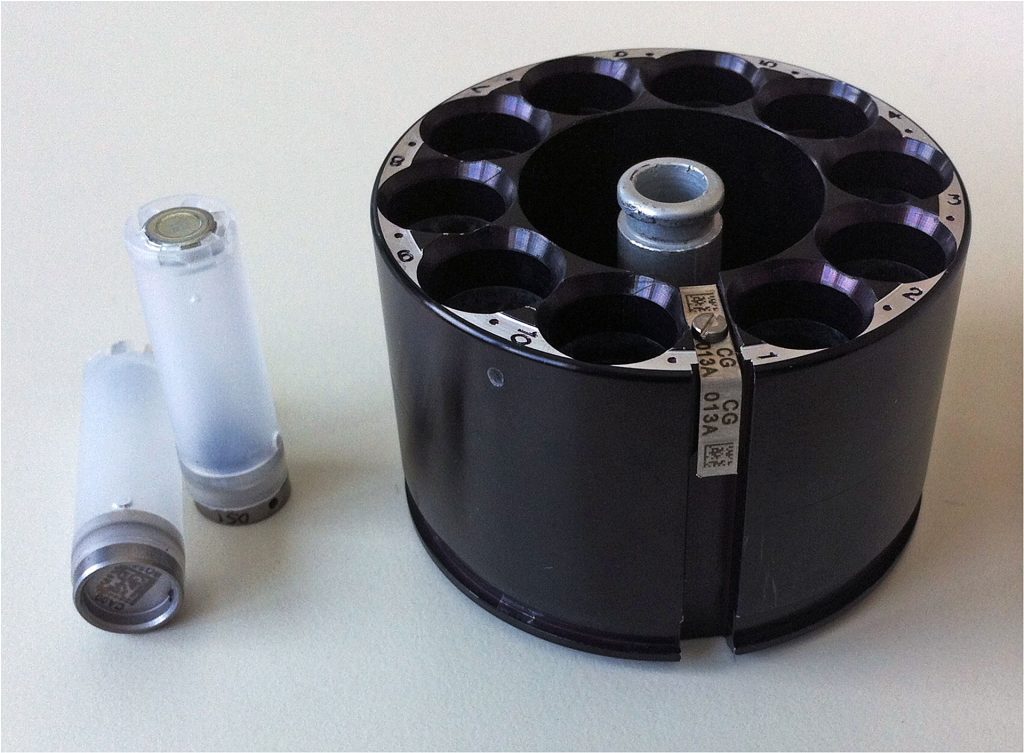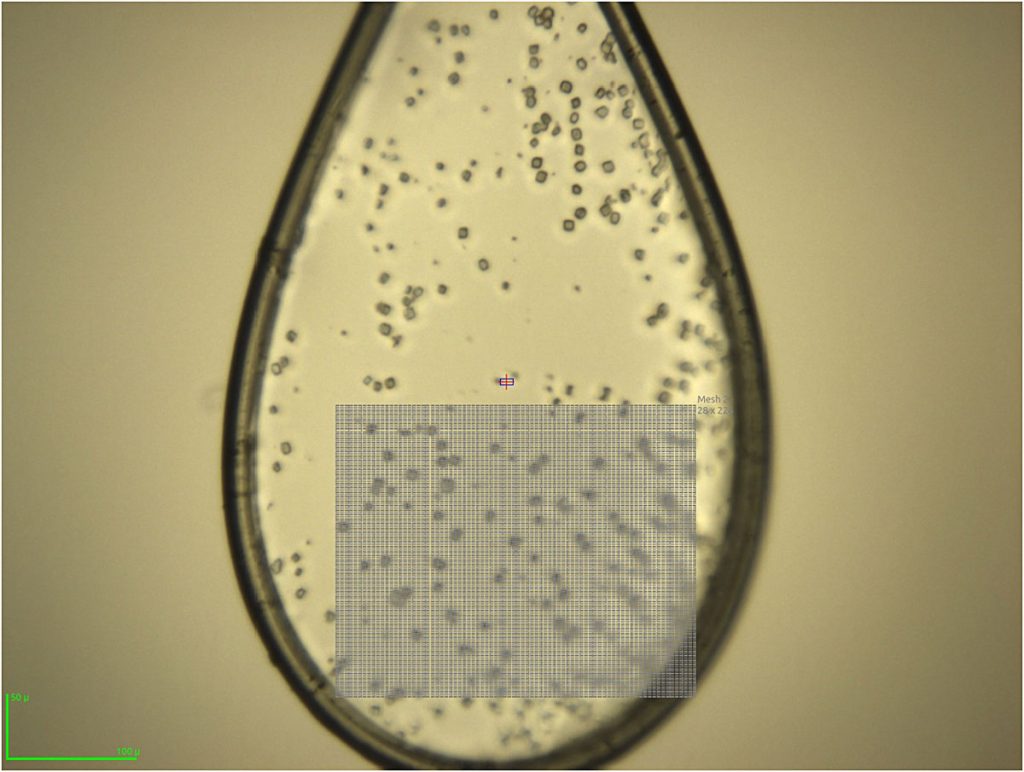Mounts
Our sample changers operate SPINE standard pucks and magnetic cap-vial mounts. Vials should be robust with a metal plate attached and the cap should contain no coating (white paint) on the bottom. Standard pin length is 18 mm.
Pucks
For sample mounting we use SPINE standard pucks. If your standard is another type of puck or you transport your crystals in canes, you can repack the samples into our pucks in the beamline, as long as they are in the correct magnetic sample mounts.
Plates at P14
Our plate holder at P14 is compatible with Crystal DirectTM–plates. These are available commercially or you can submit your protein for crystallization in CD-plates in EMBL Hamburg crystallization facility (spc@embl-hamburg.de). Please get in contact with your local contact or the principal beamline scientist prior to your beamtime to insure the beamline is set up for plates and if necessary, the sealing film of your plate is exchanged to COC. Exchange from plate screening to cryo conditions or vice versa takes about 10 minutes and it is possible to do both during your beamtime.
Crystal Direct Harvester
Crystal Direct Harvester is in operation at EMBL Hamburg. For automated crystal harvesting in CD-plates, please contact mx@embl-hamburg.de.

